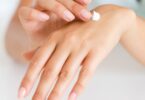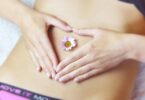This is the third and final blog in this series written to help you gain a better understanding of how prescription medications are understood and accepted by your doctor, https://valeriegoldstein.wordpress.com/2016/04/11/drug-recommendations-whats-wrong-with-this-picture/, how they work to cause “uncommon” side effects, https://valeriegoldstein.wordpress.com/2016/04/18/doctor-recommendations-why-statins-and-other-drugs-do-and-dont-work/on, and today, how you can achieve target health goals without statins.
You do not need to be a doctor to recognize symptoms that occur after starting a medicine. Trust yourself, do not “live with” symptoms and work towards finding a solution. We all (doctors, patients, family…) need to become better “listeners” to our bodies and more active as health problem solvers.
Statins are just an example (this is true for any prescription drug or over the counter medication) I am using because of their “miracle” drug status.
Natural, non-pharmaceutical statin options are listed below but just because they are natural, does not mean they do not have the potential to be dangerous. They may have interactions with other medications, foods etc… or you may have an individual reaction to any of these. Stick with brands that have the GMP (good manufacturing practice) stamp. So please, I cannot emphasize the importance of working with your doctor if you choose to try any of these.
You do not have to take all of these, one or two should do. You and your physician may need to experiment with statin alternatives based on your individual situation:
- Niacin: Vitamin B3 directly and noncompetitively inhibits, a key enzyme (hepatocyte diacylglycerol acyltransferase-2) for TG synthesis. The liver increases the breakdown of apo B and decreases VLDL and LDL particles, http://www.ncbi.nlm.nih.gov/pubmed/18375237. While its efficacy is hard to dispute, use caution when starting this supplement. Niacin is known for causing the “niacin flush”, a blush color and warm itchy feeling on the cheeks lasting about 20 minutes. To reduce your risk of this side effect, start the dose based on your body weight and sensitivity 150-250 mg increasing gradually to total desired dose as per your doctor. “To raise HDL and correct small LDL, a dose of 750-1000 mg a day usually provides full benefit. Increasing this dose to 1500 mg a day may provide slightly greater benefit. To reduce LDL or Lp(a), higher doses (from 1000 mg up to 4000-5000 mg per day) are often used, with higher doses providing greater effects. However, doses this high should be taken only with a physician’s supervision. Keep in mind that it may take three months or longer to realize the full lipid-optimizing benefits of niacin.”
Life Extensions discusses specific tips on how to use niacin avoiding the “flush”, including just drinking water, http://www.lifeextension.com/magazine/2007/3/atd/Page-01. Slow release niacin can be toxic to the liver. Try immediate or extended release niacin.
- Red rice yeast extract (RRY): Used in Eastern medicine for over 1,000 years, RRY works similarly to a statin via monacolin K and its inhibiting enzyme action of HMG CoA reductase lowering cholesterol production by the liver. Indirectly RRY increases LDL receptors, helps to remove circulating cholesterol from the blood and increases bile acid secretion as well. 1,200-2,400 milligrams helps to maintain normal levels of TC, LDL-C, TG and possibly an increase in HDL-C. RRY has been found to lower LDL 18-24%.
RRY can be used preventively as an anti-inflammatory and preventive remedy for those who have a history of heart disease or heart attack. If you are 50-75 years old, the recommended dose is 1000 mg twice daily.
- Guggulipid: is the gum resin of the mukul myrrh tree used in Ayurvedic medicine for 3,000 years. Results from one scientific study show its efficacy for lowering LDL and total cholesterol while raising HDL in 60% of participants afrter 12 weeks in volunteers using 500 mg three times a day for 2 months.
4. Omega-3 fatty acids: Among many other positive roles in health, benefits for the heart are top of the list. Omega-3’s help reduce artery plaque, thin the blood to help prevent strokes, reduces triglyceride production in the liver, and have anti-inflammatory properties. Use 1,000-4,000mg.
- Pantethine is Vitamin B5: It has been shown to ” lower cardiovascular risk markers in low to moderate cardiovascular disease risk participants eligible for statins according to NCEP guidelines”. In this study, subjects took pantethine (600 mg/day from weeks 1 to 8 and 900 mg/day from weeks 9 to16) or a placebo. Compared with placebo, the participants on pantethine showed a significant decrease in total cholesterol and LDL at 16 weeks. An 11% decrease in LDL from baseline was seen in participants on pantethine, at weeks 4, 8, 12, and 16, while participants on placebo showed a 3% increase at week 16, http://www.ncbi.nlm.nih.gov/pmc/articles/PMC3942300/.
6. Artichoke leaf extract (ALE): Standardized at 15% or 1800-1900 mg per day of Valverde Artischocke (Novartis Consumer Health) in 2 to 3 divided doses, http://www.webmd.com/vitamins-supplements/ingredientmono-842-artichoke.aspx?activeingredientid=842, is made from basal leaves of the artichoke plant. It gained popularity for medicinal use in 1850 when a French physician successfully used the extract to treat jaundice. ALE has been found to raise levels of the protective apoA (carrier molecule that supports the increases in HDL cholesterol). Results of a pilot study showed a “significant 19% increase in apoA after 30 days of supplementation; in addition, the ratio of apoA to apoB rose by 19%“. Its chlorogenic acid content or luteolin seem to also contribute to cholesterol control. Significant improvements were seen in the total cholesterol/HDL ratio and in the LDL/HDL ratio in supplemented patients, without adverse side effects.
“In a follow-up study, the same researchers found that when patients with mild cholesterol elevations took a daily 200 mg dose of artichoke leaf extract, their total cholesterol fell by nearly 10% after only 30 days.”
7. Curcumin (Curcuma longa): has been used for 4,000 years . In research published in theIndian Journal of Physiology and Pharmacology, http://www.ncbi.nlm.nih.gov/pubmed/1291482, healthy volunteers consumed 500 mg of curcumin per day for 7 days. Blood levels of oxidized LDL cholesterol dropped by 33%, total cholesterol dropped 11.63% , and HDL (“good” cholesterol) increased by 29%. Curcumin may best be absorbed when consumed with fat or “using an extract standardized to a high concentration”.
Statins are not “a miracle cure”, these alternatives are just as effective, if not more effective, and much safer heart healthy options.






